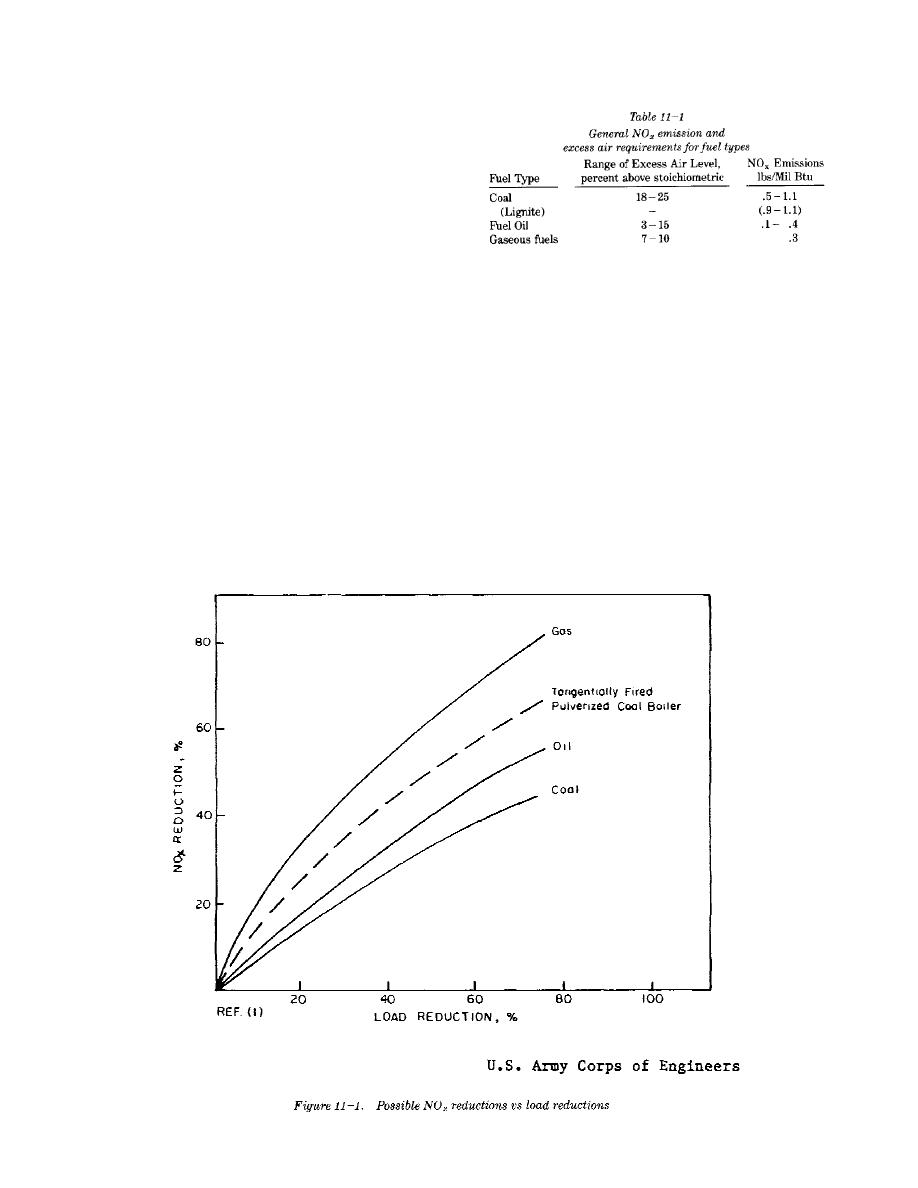
TM 5-815-1/AFR 19-6
gen contributes more to NOx formation at higher tem-
peratures.
11-3.
NOx reduction techniques
a. Fuel selection. Reduction of NOx emissions may
be accomplished by changing to a fuel which decreases
the combustion excess air requirements, peak flame
temperatures, and nitrogen content of the fuel. These
changes decrease the concentration of oxygen and
(3) Changing from a higher to a lower NOx
nitrogen in the flame envelope and the rate of the NOx
producing fuel is not usually an economical
formation reaction.
method of reducing NOx emissions because
(1) The specific boiler manufacturer should be
additional fuel costs and equipment capital
consulted to determine if a fuel conversion
costs will result. For additional information
can be performed without adverse effects.
on fuel substitution, see paragraph 10-3. In
The general NOx reduction capability of
doing so, it should be noted that changing
initiating a change in fuel can be seen
from coal to oil or gas firing is not in
comparatively in table 11-1.
accordance with present AR 420-49.
(2) A consideration when comtemplating a
b. Load reduction. Load reduction is an effective
change in fuel type is that NOx emission
technique for reducing NOx emissions. Load reduction
regulations are usually based on fuel type.
has the effect of decreasing the heat release rate and
Switching to a cleaner fuel may result in the
reducing furnace temperature. A lowering of furnace
temperature decreases the rate of NOx formation.
necessity of conforming to a more strict
(1) NOx reduction by load reduction is illustrated
emission standard.
in figure 11-1. As shown, a greater reduction
11-2


 Previous Page
Previous Page
